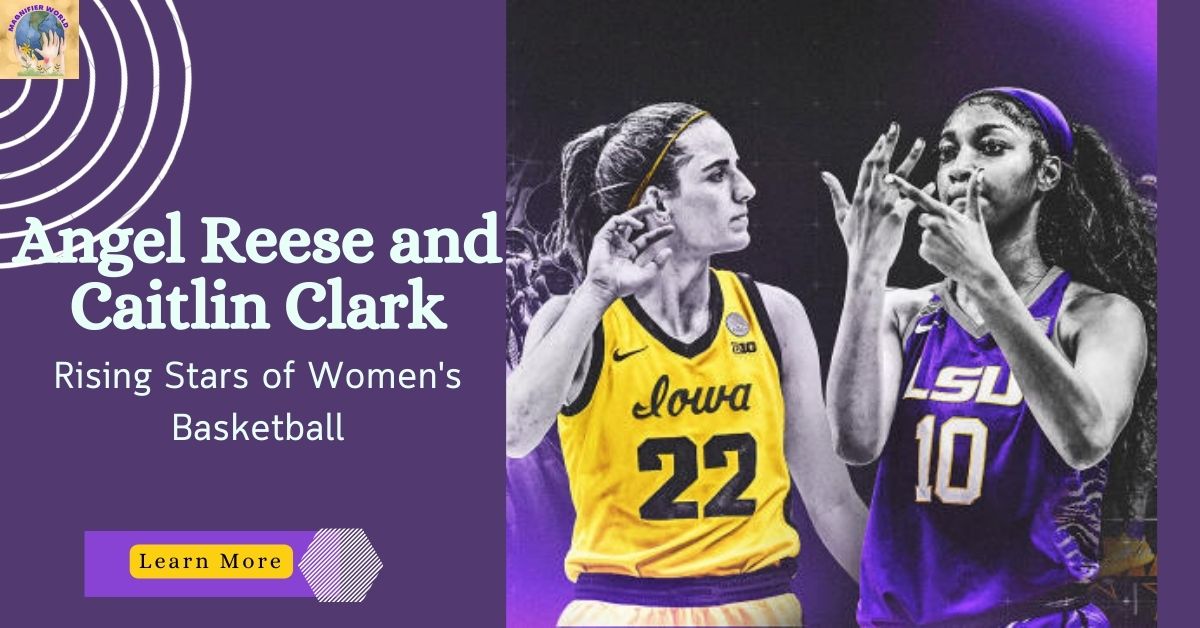The Women’s NCAA Tournament represents one among the collegiate athletic competitions that fans look forward to the greatest. which demonstrates the skill, strength, plus dedication of female athletes near the nation. This tournament has an existence spanning many years and has grown to be a well-known spectacle that garners a lot of notice. This fosters a feeling of solidarity between athletes, instructors, especially fans.
The Women’s NCAA Tournament has experienced exponential growth in both scope and stature since its founding in 1982. Reflecting the rising stature of women’s sports on the national scene. Originally a relatively small competition, it has grown into a national championship including elite teams. From institutions all throughout the nation vying for the prestigious title of national champion.
Diversity and Inclusivity in Women’s College Basketball
As the last event of the regular season, conference titles, and selection process. The tournament pits the top teams in women’s college basketball against one another for the title. Every game, from the first round to the Final Four. It is filled with drama, passion, and the possibility of fairy tales coming true.
The Women’s NCAA Tournament’s diversity, which provides chances for teams from universities of all sizes. And backgrounds to play at the top level, is one of its distinguishing characteristics. Every team enters the tournament with distinct strengths and goals. Whether they are from modest colleges looking to leave their mark or from big programs with illustrious histories.
Beyond the excitement of competition, the Women’s NCAA Tournament has cultural significance. As a venue for female athletes to display their skills and encourage upcoming female athletes. The event gives athletes a platform to flourish and defy conventional gender standards in athletics. As women’s basketball continues to gain popularity and prominence.
Community Engagement and Fan Support
Additionally, the Women’s NCAA Tournament fosters a sense of community and pride at each participating school. By acting as a focal point for supporters, alumni, and fans of women’s college basketball. Supporters, whether they are watching the action from a distance or from the stands. Are crucial in influencing the mood and excitement of the competition.
Growing interest in women’s sports and appreciation for the skill and athleticism of female players. Are reflected in the Women’s NCAA Tournament’s increased media attention, corporate sponsorships, and fan involvement in recent years. The increased exposure of women’s college basketball has assisted in raising its stature and reaching new audiences.
The Women’s NCAA Tournament is still a monument to the perseverance, enthusiasm. And hard work of women in sports as it develops and captivates sports fans around the country. The tournament epitomizes the spirit of competition and the desire of excellence that characterize collegiate sports at their best. With dramatic buzzer-beaters and heartfelt victories.
History and Evolution of the Women’s NCAA Tournament
The Women’s NCAA Tournament is evidence of how women’s collegiate basketball has developed throughout time. Its history is one of tenacity, advancement, and the unwavering quest for parity in sports.
In 1982, the Women’s NCAA Tournament made its debut, setting the stage. For what would grow to be one of the most prominent competitions for women’s college basketball. Thirty-two teams were playing in a single-elimination style at the time. After defeating Cheyney University in the championship match, the University of Louisiana Tech became the first victor.
The event had many difficulties in its early years, including as little media attention, low attendance, and different resources than the men’s competition. But the players’, coaches’, and supporters’ fervor and commitment spurred.
The Women’s NCAA Tournament had a steady increase in participation and viewership during the 1980s and 1990s. The tournament’s prestige was elevated and drew in a wider audience with the addition of more teams. More television exposure, and the rise of star players.
The Final Four format’s introduction in 1996 was a pivotal point in the tournament’s development. This modification gave the competition a new level of excitement. And competitiveness while also giving the best teams and players a chance to compete on a national scale.
The Women’s NCAA Tournament flourished as the new millennium got underway, drawing more attention from viewers, advertisers, and media outlets. With increased play quality and unprecedented levels of competition, each event became increasingly captivating.
Competitive Landscape: Teams and Conferences
The range and depth of skill among different teams and conferences, each of which brings special assets and strategies to the court, form the competitive landscape of the women’s NCAA Tournament.
The teams that represent American colleges and institutions are the focal point of the competition. These teams are made up of talented athletes who have spent years honing their craft through training and dedication. They compete in the competition, showing off their skill, tenacity, and camaraderie as they strive to win the national title.
The variety of conferences that compete in the women’s NCAA Tournament is one of its distinguishing characteristics.
The variety amongst leagues which compete in the women’s NCAA Tournament is one of its distinguishing characteristics. These conferences give teams a stage on which to compete against one another and act similar to the NCAA governing body. The Atlantic Coast Conference (ACC), Big Ten Conference, Southeastern Conference (SEC), and Pac-12 Conference are a few of the most well-known conferences for women’s collegiate basketball.
With a number of elite programs and legendary rivalries, each conference amplifies the event’s intensity and excitement. In the regular season, teams from these leagues frequently play one another, creating excitement for possible matches in the NCAA Tournament.
Impact and Cultural Significance of the Tournament
The Women’s NCAA Tournament has had a profound cultural influence on women’s athletics and society at large. Making it more than just a competitive event. From its modest origins to its present position as a major talent and competitiveness showcase, the tournament has made a lasting impression on the sports world and beyond.
The Women’s NCAA Tournament is fundamentally a celebration of athletic accomplishment and brilliance. It gives female athletes a stage on the national arena to display their abilities, tenacity, and collaboration. The structure of the event, which consists of several elimination rounds before the championship game. Engenders a sense of suspense and excitement that enthralls spectators and motivates competitors alike.
However, the Women’s NCAA Tournament has an impact that goes well beyond the court. The competition has been essential in promoting women’s sports and dismantling obstacles to gender parity in athletics. The competition has assisted in dispelling myths and redefining conventional ideas of femininity and athleticism. By giving female athletes the chance to compete at the greatest levels and be recognized for their accomplishments.
Furthermore, women’s basketball at all levels has benefited from the tournament’s catalytic effect. The event has encouraged generations of young girls to pick up a basketball. And dream of one day competing in the NCAA event themselves, from youth leagues to professional leagues.
Fan Engagement and Media Coverage
The Women’s NCAA Tournament is made possible in large part by media coverage and fan involvement. Which raises the event’s profile and increases its effect both on and off the court. The tournament has become a major event in women’s sports as a result of the growth in media attention. And fan participation that has accompanied its increasing popularity and relevance throughout time.
The fervor and steadfastness of the Women’s NCAA Tournament fan base is one of the main factors influencing fan involvement. Both casual and ardent college basketball fans. Look forward to the tournament every year with great anticipation, wanting to cheer on their preferred teams and players. Fans are kept interested in the event because of its unique format. Which includes single-elimination games and the possibility of upsets.
Fan interaction is bolstered by a range of auxiliary events and activities in addition to the tournament’s intrinsic drama. Fan festivals, pep rallies, watch parties, and community outreach programs are a few examples of these. They all aim to improve the fan experience and promote a feeling of solidarity and connection among supporters. Fans’ emotional connection to the event is further enhanced by the tournament’s opportunity for them to interact with players, coaches, and alumni.
The Women’s NCAA Tournament depends heavily on media coverage to increase its impact. And reach while guaranteeing that it gets the respect and recognition it merits. Among other things, coverage could include player profiles, highlight reels, live game broadcasts, feature stories, and pre- and post-game commentary.
Read Also:-
- A Comprehensive Look at the Football Rivalry Between Mexico and Germany
- Excitement Builds for the 2024 T20 Cricket World Cup
- Exploring the Best FIFA mobile team
Future Outlook and Emerging Trends
Since its start, the Women’s NCAA Tournament has grown significantly. Becoming a renowned occasion that enthralls spectators and honors the skill and athleticism of female collegiate basketball players. A number of new trends and advancements could influence the tournament’s future course and increase its influence in the sports industry.
A prominent trend influencing the future of the Women’s NCAA Tournament is the growing focus on gender parity and diversity throughout the sports industry. Growing awareness and advocacy for equal treatment and opportunity for female athletes—both on and off the court—has been observed in recent years. Consequently, initiatives to guarantee that women’s sports receive the same degree of support are gaining more traction.
The Women’s NCAA Tournament demonstrates a dedication to gender parity in a number of ways, such as heightened media attention, marketing opportunities, and infrastructure and facility investments. With an emphasis on increasing possibilities for female athletes at all levels of the game, we can anticipate seeing ongoing efforts to promote and enhance women’s basketball in the future.
The increasing impact of technology and digital media on fan interaction and the viewing experience is another new development in the women’s NCAA Tournament. Sports fans are consuming content on a range of platforms in an increasingly connected world, from social media channels to live streaming services and traditional television broadcasts.
Conclusion:
The Women’s NCAA Tournament is a shining example of the exceptional skill, commitment, and athleticism of female collegiate basketball players. As we get to the end of our investigation into this legendary occasion, it is evident that spectators, competitors, and towns all around the country have a unique place in their hearts for the competition.
The Women’s NCAA Tournament has come a long way from its modest origins to become a widely acclaimed and cherished athletic event. From the initial endeavors of women’s basketball teams to the current dominant programs, the competition has played a pivotal role in propelling the prominence and prospects for female athletes.
The Women’s NCAA Tournament’s capacity to excite spectators outside of the basketball court and push the boundaries of sport is among its most amazing features. The competition acts as a forum for female athletes who challenge expectations and smash preconceptions, exhibiting their resiliency, tenacity, and camaraderie.
Furthermore, the competition has cultural importance that goes beyond athletics and acts as a stimulus for advancement in society. Through its commitment to gender equity, diversity, and inclusion, the Women’s NCAA Tournament has become a symbol of progress and empowerment, challenging outdated norms and championing the rights of female athletes. The Women’s NCAA Tournament is well-positioned to carry on its outstanding history and significant influence as we move forward.
FAQ NCAA Tournament:
1. When was the Women’s NCAA Tournament first established?
The Women’s NCAA Tournament was first established in 1982, marking the beginning of organized postseason competition for women’s college basketball teams at the national level.
2. How many teams participate in the Women’s NCAA Tournament?
The tournament typically features 64 teams competing in a single-elimination format. These teams are selected through an extensive process based on their regular-season performance, conference championships, and other factors.
3. What are some notable teams in the history of the Women’s NCAA Tournament?
Several teams have left their mark on the Women’s NCAA Tournament over the years. Programs like the University of Connecticut Huskies, Tennessee Lady Volunteers, and Stanford Cardinal have. Consistently been among the top contenders, winning multiple championships and setting records along the way.
4. How does the Women’s NCAA Tournament impact women’s basketball at the collegiate level?
The tournament serves as the pinnacle of women’s college basketball. Providing a platform for teams to showcase their talent and compete for a national championship. It also generates significant media attention and exposure for the sport. Inspiring young athletes and elevating the profile of women’s basketball across the country.
5. What is the significance of the Women’s NCAA Tournament for gender equity in sports?
The Women’s NCAA Tournament plays a crucial role in promoting gender equity and diversity in collegiate athletics. By providing opportunities for female athletes to compete at the highest level and receive recognition for their achievements. The tournament helps break down barriers and advance the cause of gender equality in sports.
ESPN



